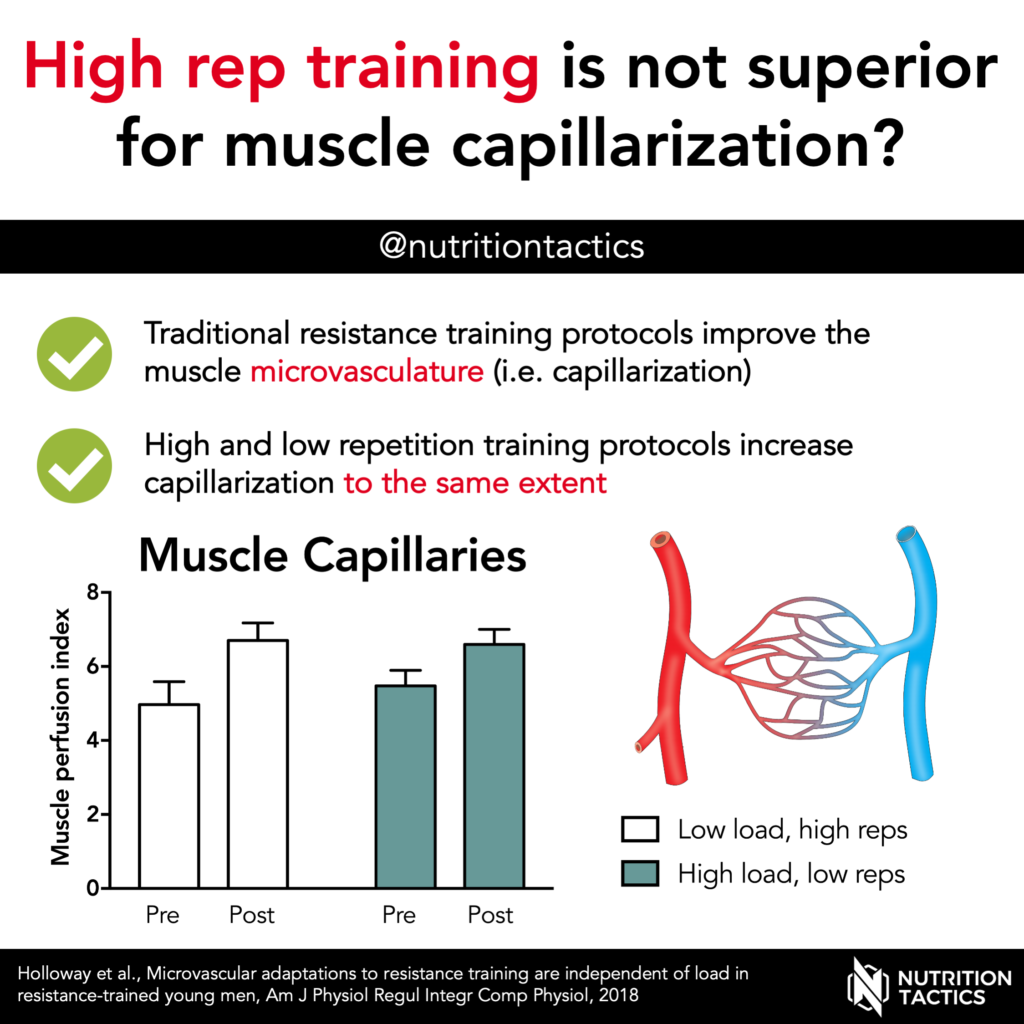Are high rep resistance training protocols superior to increase muscle capillarization?
Muscle capillaries (the smallest blood vessels) are responsible for the delivery of oxygen, nutrients, and growth factors to the cells. Therefore, increasing the number of capillaries results in better perfusion and a better delivery of these compounds to the muscle fibers.
It is well established that rep ranges do not impact muscle growth when sets are taken to failure. However, it has been suggested that high rep resistance training results in greater increases in muscle capillarization.
This study investigated the effect of low or high rep resistance training on muscle capillarization in resistance-trained subjects. The low rep group performed 3 sets of 8-12 reps at 75-90% 1RM, while the high rep group performed 3 sets of 20-25 reps at 30-50% 1RM. Every set was performed until voluntary failure in both groups. Muscle capillarization was assessed by taking muscle biopsies and counting the capillaries in between the muscle fibers with microscopy.
Both high and low-rep training increased muscle capillarization. However, there was no difference in capillarization gains between the groups.
Therefore, although high rep training typically results in a larger ‘pump’ (muscle swelling due to blood flow), this does not seem to translate into greater capillarization.
Next in the resistance training series:
Resistance training counteracts muscle mass loss with ADT?


Leave a Reply